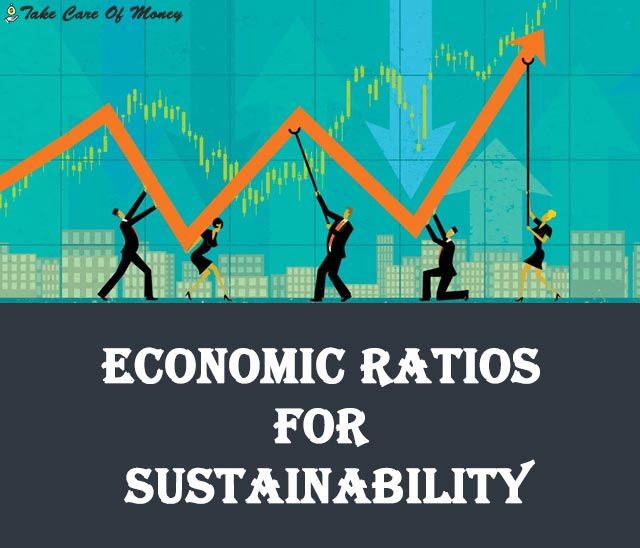Table of Contents
Economic ratios can help us achieve a more sustainable future. To move towards a greener and environmentally friendly economy model, we need to make better use of resources, promote stability and competition, develop skills and reward work, and provide goods and services that meet the needs of consumers and minimize their impact on the environment.
Is economic growth the enemy of sustainability?
The traditional measure of economic performance is gross domestic product or GDP, which represents the total value of all goods and services produced by a nation during a given year. It is effectively a measure of traditional economic strength.
The economy of a nation has a significant effect on environmental problems. Energy consumption, pollution and waste are just some of the impacts of the economy on our society. But if we want maintain growth and increase economic strength, we must find a way to make practices that cause environmental problems less harmful to the environment.
One way to achieve this is through new initiatives and technologies that reduce some of the negative impacts.
Economic ratios: the necessary monitoring
Companies need a strong and stable economy as the basis for innovation and investment, on which future jobs depend. But you have to control the way that stability is ensured and the way growth occurs. Economic ratios are the instrument that can best help monitor what happens.
Total GDP and GDP per capita are good indicators of the relative strengths of the nations of the world. Economically stronger nations should perhaps take the initiative to address environmental problems.
Other indicators to consider are:
- Investment in public, commercial and private assets.
- Social investment.
- Rate of inflation.
- Government loan and debt.
- Competitiveness / Productivity
- Trade / exports / imports.
However, it is increasingly recognized that These traditional economic indicators alone do not provide an adequate measure of the sustainability of an economy.
To increase the visibility offered by these indicators, we need knowing how efficient our economy is, both in terms of the natural resources it consumes (and wastes) and in regard to the use of working capital. Some economic ratios and indicators that could help in this regard are:
- Waste production and energy and water consumption.
- Transport indicators
- Education and employment
- Level of consumer spending.
More indicators and economic and non-economic sustainability ratios
Business indicators
- Percentage of organizations that have adopted sustainable development goals.
- Business participation in school and civic events.
- Percentage of companies that develop new products or services.
- Percentage of entrepreneurs who start a new business.
- Number of services, products and environmental technologies exported.
- Percentage of GDP of secondary production and business services.
- Government subsidies as a percentage of gross income.
- Manufacturing productivity
Employment indicators
- Long term unemployment.
- Real unemployment (estimated).
- Unemployment rate.
- Professional, technical and managerial occupations as a percentage of the total.
- Agricultural employment
- Employment rate.
- Number of green jobs.
- Net growth of employment.
- Job growth among new companies.
- Total salaried jobs.
- Number of jobs in the manufacturing of added value.
Financial indicators
- Sustainable economic welfare index.
- Number and value of commercial loans in the low income area.
- Percentage of products and services where the price reflects the cost of the life cycle.
- Energy and machinery expenses as a percentage of the farm’s gross income.
- Debt per capita.
- GDP per capita adjusted for depletion of natural resources.
- Net internal product adjusted to the environment.
- Percentage of GDP spent on research and development.
- Agricultural added value as a percentage of gross sales.
- Commercial personal property value per worker.
- Annual capital invested in municipal infrastructure.
- Gross state product per capita as a percentage of Spain’s GNP.
- Value of industrial and commercial property.
- Total euros and euros per capita deposited in local banks annually.
- Value of residential and commercial properties.
- Assessed value of real estate per capita, adjusted for inflation.
- Value of goods exported internationally.
Revenue Indicators
- Wealth distribution
- Percentage of jobs that pay a living wage for a family of two.
- Percentage of jobs that do not pay a self-sufficiency salary.
- Income distribution
- Percentage of personal income available that is saved.
- Average income of 20 percent lower and higher.
- Hours of work required to meet basic needs.
- Poor population areas more than 1.5 times the national rate.
- People who live below the poverty line.
- Manufacturing salary and salary gains as a percentage of total income
- Number or percentage of residents receiving social assistance.
- Income disparity between provinces.
- Effective purchase income per capita.
- Personal income per capita.
- Average earnings per job.
- Average family income as a percentage of the median of the country.
- Cost of living index.
- Per capita income as a percentage of the national average.
- Per capita income in non-metropolitan areas.
Resource use indicators
- Sale of locally produced food at the farmers market.
- Percentage of forest repopulated successfully.
- Average energy efficiency rating of households.
- Annual area in crop fields.
- Food production and usage balance.
- Industrial use of toxic chemicals.
- Values of key natural resources.
- Cost of 1,000 kWh of electricity.
Transport indicators
- Percentage of all manufacturing cargo transported by rail, air or water.
- Containers transported through the seaport.
- Availability of cargo shipping in rural areas.
